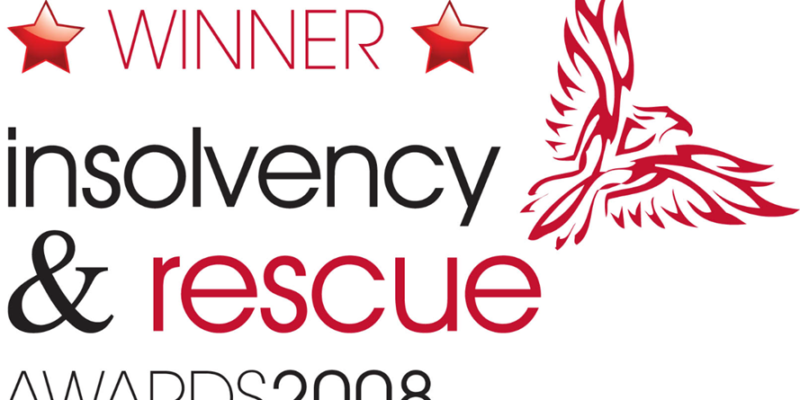What would your future-you have to say to you?
The no-pants guide to spending, saving, and thriving in the real world.
What would your future-you have to say to you?
When I was in high school and working 15 to 20 hours a week, my mom gave me free rein to use the money I earned as I would like. Actually, she said nothing to me about saving for college or putting some money into savings.
When I had friends who complained that they had to put away some of their earnings, I commiserated with them. How unfair of their parents to make them save some of their money! They worked hard for their money, often at crappy part-time jobs. They deserved to spend the money any way they saw fit.
The way I saw it, why save for college? According to financial aid rules, if the student has any savings, she would have to use the majority of it to pay for college. How unfair. To add insult to injury, if prospective college students have some savings, they would qualify for less financial aid, which often meant fewer student loans.
The injustice.
Yes, it was better to spend my hard earned money than save it and be penalized.
No one told me differently. In fact, many people in my family agreed with me and encouraged me to buy a used car to get to and from my job. Of course, I paid the loan payments for the car, the gas I used and my insurance out of money from my job. That was a responsible use of money, but I also went out to eat with friends, a lot. At 16, I was going out to eat with my friends twice a week at least.
However, my plan worked perfectly. When I went to college, I didn’t have to use any of my hard earned cash. No, not me, because I hadn’t saved anything. Instead, I left college with nearly $20,000 in student loan debt. I took two years off and paid down as much student loan debt as I could, getting it down to about $8,000, but then I went to graduate school and took on more student loan debt. I graduated with nearly $25,000 in debt total. I am still paying on it today, 13 years later.
Now that I am the parent, I am one of those “awful” parents who makes her kids save. My son knows when he gets his allowance, some goes to save, some goes to donate, and some goes to spend. True, it makes me cringe when he uses his spend money on little trinkets like temporary tattoos, stickers, and gum, but I keep silent. He did the work to earn the money, and he can spend it as he likes. However, I am inflexible with saving; that money must be set aside. When he goes to college, I expect that he will have to use the majority of that money. Rather than seeing it as a waste, I see it as an important component of his financial education. Spending his money to pay a portion of his college education will hopefully make him take college more seriously.
Meanwhile, I have already begun having chats with him about money, spending, and budgeting. He watches his dad and I work hard to pay down our debt with gazelle intensity. He sees me use a calculator at the grocery store to see how much our groceries will be.
Ultimately, he will make his own financial decisions as he grows up, but I plan to teach him throughout these important years so that even if he turns into a spendthrift, he will have a firm financial understanding to revert to as he ages. While my mom taught me how to stretch money further, she never taught me how to save; I hope saving is a lesson my son takes with him throughout his adulthood.
How do you teach your kids about money management?
Melissa writes at Fiscal Phoenix where she encourages people to rise from the ashes of their financial mistakes as she and her husband are doing.
First, my disclaimer: I’m not destitute.
However, I’m trying to spend Christmas acting like I am a pauper.
Why, with small children and beautiful-and-more-than-deserving wife, would I want to deprive my family of a bountiful holiday?
Before we get into the reasons for being a horrible grinch bent on depriving my children of their god-given right to rampant consumerism, let’s look at the Philosophy of Destitution.
The primary reason to pull back and tone it down is basic frugality. Excessive anything is not frugal. I am training my children–and for that matter, my wife and my self–in the finer arts of personal responsibility and frugality. Accumulating debt for a fleeting holiday is insane. If we can’t afford to buy it, we certainly can’t afford to give it. Anything else would be setting a bad example and children learn best by example.
Another piece of the Philosophy of Destitution(when I read this word, I hear a deep, booming voice in my head, like a 30s radio superhero voiceover) is “green”. I consider myself a conservationalist rather than an environmentalist, so don’t read too much into that color. I try to be responsible, instead of destructive and I try to avoid being wasteful. Toys that won’t be played with are wasteful. A garbage can full of packaging for those same toys costs money. It is much cheaper to avoid the landfill here.
Back to “Why”. Why would I be willing to deprive my family?

Everyone needs an emergency fund. More than that, you will eventually need retirement savings, a new car, a big-screen TV, or maybe just a new kidney. Whatever the reason, one day, have a comfortable savings account will make your life easier.
But, Jason, you say, it’s hard to save money! How can I start saving when I can’t make ends meet? I’ve got rent, 9 kids, and a DVD addiction that won’t quit. My mortgage is underwater, my Mercedes still has 8 years on the loan, and the Shoe-of-the-Month Club only carries Christian Louboutin’s. What can I do?
Well, I’ll reply, since I am Jason and you asked for me by name, you need to find a way to make it happen. I’d never recommend someone give up their diamond-studded kicks, but something’s gotta give. In the meantime, there are some ways you can save money without feeling the sting of delayed gratification.
1. Save your raise. When you get your next raise, pretend you didn’t. Set up an automatic transfer to stick that new 5% straight into a savings account. Don’t give yourself an opportunity to spend it.
2. Find it, hide it. When your Aunt Gertrude dies and leaves your her extensive collection of California Raisins figurines, sell them and save the money. If you find a $20 bill on the ground, throw it right into your savings account. When your 30th lottery ticket of the week gives you a $10 prize, save it! Don’t waste found money on luxuries. Use it to build your future.
3. Let it lapse. Do you have magazine subscriptions you never read? Or a gym membership you haven’t used since last winter? Panty-of-the-Month? Crack dealer who delivers? Stop paying them! Let those wasted services fall to the wayside and put the money to better use. I don’t mean flipping QVC products on eBay, either. Save the money.
4. Jar of 1s. Roughly once a week, I dig through my pockets and my money clip looking for one dollar bills. Any that I find go in a box to be forgotten. I use that box as walking-around money for our annual vacation, but it could easily get repurposed as a temporary holding tank for money I haven’t gotten to the bank, yet.
5. Round it up. Do you balance your checkbook? If you don’t, start. If you do, start doing it wrong. Round up all of your entries to the nearest dollar. $1.10 gets recorded as $2. $25.75 goes in as $26. If you use your checkbook or debit card 100 times a month, that’s going to be close to $75 saved with absolutely no effort. It even makes recording your spending easier.
There you have it, 5 easy ways to save money that won’t cause you a moment’s pain.
Do you have any tricks to help you save money?

 Frequently regarded as an indication of personal failure, bankruptcy is still today widely considered a highly sensitive topic. Many will even feel uneasy speaking about their debt problems with close relatives and friends. If you, too, are facing serious debt issues and are in need of help, rest assured you are not the only one afraid of sliding into bankruptcy. In fact, thousands of households in the UK are threateningly close to insolvency and most are experiencing the exact same feelings of shame and despair. This perfectly understandable reaction has, meanwhile, unfortunately overshadowed the fact that there are hands-on practical steps especially designed to help you resolve your debt situation.
Frequently regarded as an indication of personal failure, bankruptcy is still today widely considered a highly sensitive topic. Many will even feel uneasy speaking about their debt problems with close relatives and friends. If you, too, are facing serious debt issues and are in need of help, rest assured you are not the only one afraid of sliding into bankruptcy. In fact, thousands of households in the UK are threateningly close to insolvency and most are experiencing the exact same feelings of shame and despair. This perfectly understandable reaction has, meanwhile, unfortunately overshadowed the fact that there are hands-on practical steps especially designed to help you resolve your debt situation.
There is a good reason why addressing the issue of bankruptcy has an urgent ring to it. Recent statistics indicate a steady rise of individual company insolvencies in the UK, particularly since the 1990s. According to the British Insolvency Service, the rate of bankruptcy on an individual level has risen from a total of 24,441 in 1997 to staggering 106,645 in 2007 in England and Wales. Alarmingly, the peak doesn’t seem to have been reached yet. As respected online-service ‘This is Money’ reports, ‘record numbers of people were declared insolvent in England and Wales’ in 2010, further noting that ‘an all-time high of 135,089 people were declared insolvent in 2010—0.7% up on the total for 2009.’ As you can gather from these numbers, you are certainly not alone with your debt problems: Around 140,000 adults are facing bankruptcy as a direct consequence of mishandling their debt issues, which translates to 385 new cases per day. It has already been pointed out that ‘the number of victims will be enough to fill both the London 2012 Olympic stadium and the Emirates Stadium.’
So, if you’re facing bankruptcy, there’s no need to feel ashamed. By taking an active stance and addressing your debt issues, you may even be able to avert insolvency altogether. With years of experience and several distinctions to our credit, the Debt Advisory Line have established themselves as leading experts in the field of debt management. We’ve already helped thousands of individuals and households who thought bankruptcy was their only option. Settling debt issues is our forte – and you shouldn’t settle with anything less.
This post brought to you by Debt Advisory Line.
I’ve got some expensive habits. Not like Charlie Sheen snorting $2500 of blow of a hooker’s boobs, but still expensive.

My latest one is dancing lessons. Linda surprised me on one of weekly date nights a few months ago. She found a Groupon for the dancing studio we used before we got married. It was $69 for a month of unlimited group lessons.
When the month was up, we signed on for their beginner cycle of lessons, which cost another $400.
And now we’re starting the Social Foundation program.
Social Foundation is a series of classes that teach some advanced moves, but also to teach dancers how to lead and follow properly and how to dance socially and look respectable on a dance floor in any number of situations. Leading and following are important because every single dance move out there has specific cues that tell your partner what’s coming next. If she doesn’t know, you both look clumsy.
So we chose the four dances we’re going to learn better and signed up. We’re going to learn the Rumba, Waltz, Tango, and Swing. We’re already pretty good at Rumba and Swing, but we’re going to get better. Personally, I’m hoping to also figure out how to use the Tango on an open dance floor without crashing into people. That way, we can pretend to be Gomez and Morticia, my heroes.
Now, the thing is, dance lessons aren’t cheap. They cost about $100 per hour, where an hour is defined as 45 minutes. We’re rolling the last half of our beginner lessons into our social foundation lessons and paying $1400.
Ouch.
They gave us the option of financing it over 3-4 months, but I didn’t want to pay an extra $200 for the privilege. I think we’ll be tapping the vacation fund to pay for the lessons.
Why am I willing to pay this much?
Dancing is one of the very few things Linda and I both enjoy. We’re pretty good at it, it’s great exercise, it’s fun, and (shhh!) it counts as foreplay. It also doesn’t hurt to have the sidelines of the dance floor lined with people watching us dance, wishing they could do what we’re doing…or wishing their husbands were willing to learn how to dance. This also isn’t just something we’re doing at the studio. We are out on a dance floor dancing to a live band almost every week. That usually comes with about $25 in cover charges and drinks.
Fun, exercise, have sex, and inspire jealousy. That’s a winning combination. And finding things to do that we both love to do is difficult and easily worth the $2000 we’ve paid the dance studio this year.